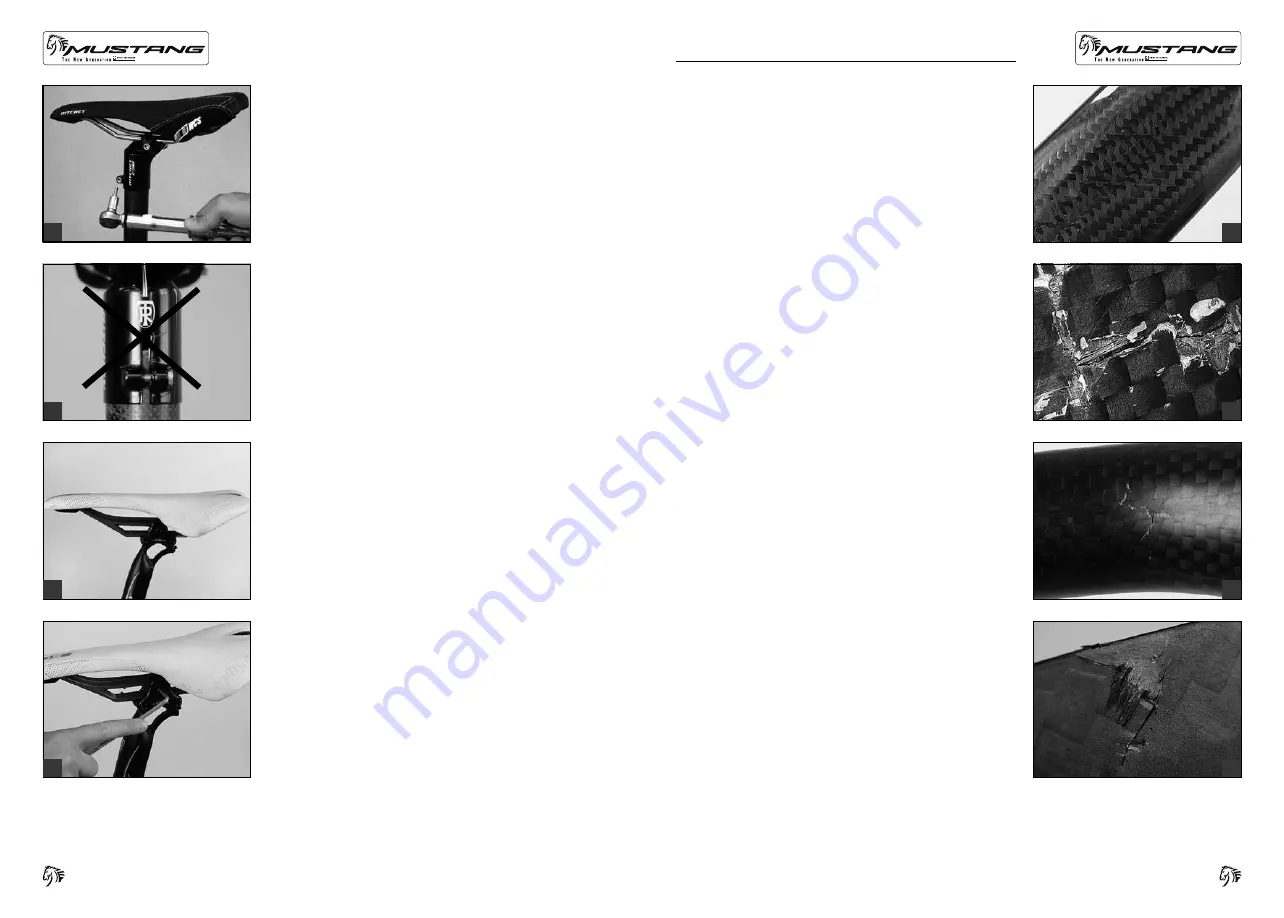
46
47
Ritchey “Mast Topper”
Installation of a mast topper seat post
(a)
has a lot in common with nor-
mal seat post mounting, except that it is mounted on the exterior (as op-
posed to the interior) of the extended seat tube of certain frame models.
In other words, the extended seat tube is inserted in the mast topper
seat post. All of the information listed in this manual about tolerances in
diameter and the absence of lubricants for carbon parts are the same.
In order to install a mast topper seat post, this kind of frame design
generally requires that the seat tube be shortened in order to achieve
appropriate saddle height. This operation should only be performed by
a certified and qualified mechanic.
g
Strictly follow the frame manufacturer’s directions, and
seek the assistance of a certified and qualified mechanic.
The range of vertical adjustment is approximately 20 mm, which is why
the extended seat tube of a compatible frame must be carefully meas-
ured and cut to precisely the right length.
In order to fine-tune and finalize your saddle position, loosen the bolt
one to two turns and shift the mast topper seat post up or down a few
millimetres, as needed. If the uppermost end of the seat tube is visible
in the slot of the mast topper seat post, the seat tube is not inserted
far enough into the mast topper seat post and sufficient clamping hold
might not be possible
(b)
, potentially resulting in failure, which could
lead to an accident and potential injury.
Seat post Monorail
The saddle system Monorail
(c)
from Selle Italia has a special seat post
head for the saddle mounting. The saddle is not fitted with two saddle
rails, as usual, but has a single carbon rail running underneath the cen-
tre of the saddle cover. This makes for a larger horizontal adjustment
range of the saddle.
After releasing the two or three bolts at the seat post head you can
move the saddle to the front and to the rear. The three bolts also allow
the adjustment of the saddle tilt
(d)
(e.g. lowering the front end of the
saddle). When you have found the perfect position, tighten the bolts
to the specified maximum torque, which is listed on the seat post in
newton-meters (Nm).
carbon – important information
Special characteristics of carbon components
made of carbon-fibre-
reinforced plastics
(e)
, also referred to as carbon or CRP, need to be
taken into account.
Carbon is an extremely strong material which combines high resistance
with low weight. After overstress, however, carbon components, unlike
metal parts, do not necessarily show durable or visible deformation
even though some of its fibres may be damaged.
This makes it very dangerous to continue using the carbon component
after an impact or undue stress, as it may fail without previous warning
thereby causing an accident with unforeseeable consequences. For this
reason we recommend that you have the component, or to be certain,
the entire bicycle checked by your MUSTANG bicycle dealer after every
incident, such as e.g. a crash.
For safety reasons, damaged components made of carbon
(f-h)
must
never be repaired. They must be replaced at once! Prevent further use
by taking appropriate measures, i.e. saw the component into pieces.
Components made of carbon should under no circumstances be ex-
posed to excessive heat. Therefore, never have a carbon component
enamelled or powder-coated. The temperatures required for doing so
could destroy it. Do not leave carbon fibre components near a source of
heat or in your car during hot or sunny weather.
Carbon components have, like all lightweight bicycle components, a
limited service life. For this reason, change stem and handlebars at
regular intervals (e.g. every 3 years), even if they have not experienced
any undue stress, such as e.g. an accident.
When you intend to transport your MUSTANG bicycle in the boot of your
car, be sure to protect the bicycle or the carbon frame and components.
Blankets, foam tubes or the like are a suitable padding to protect the
sensitive material from damage.
Always park your MUSTANG bicycle carefully and make sure it does
not topple over. Carbon frames and components may already sustain
damage by simply toppling over and thereby hitting e.g. a sharp edge.
a
b
c
d
e
f
g
h
Содержание MTB/Cross
Страница 69: ......















































